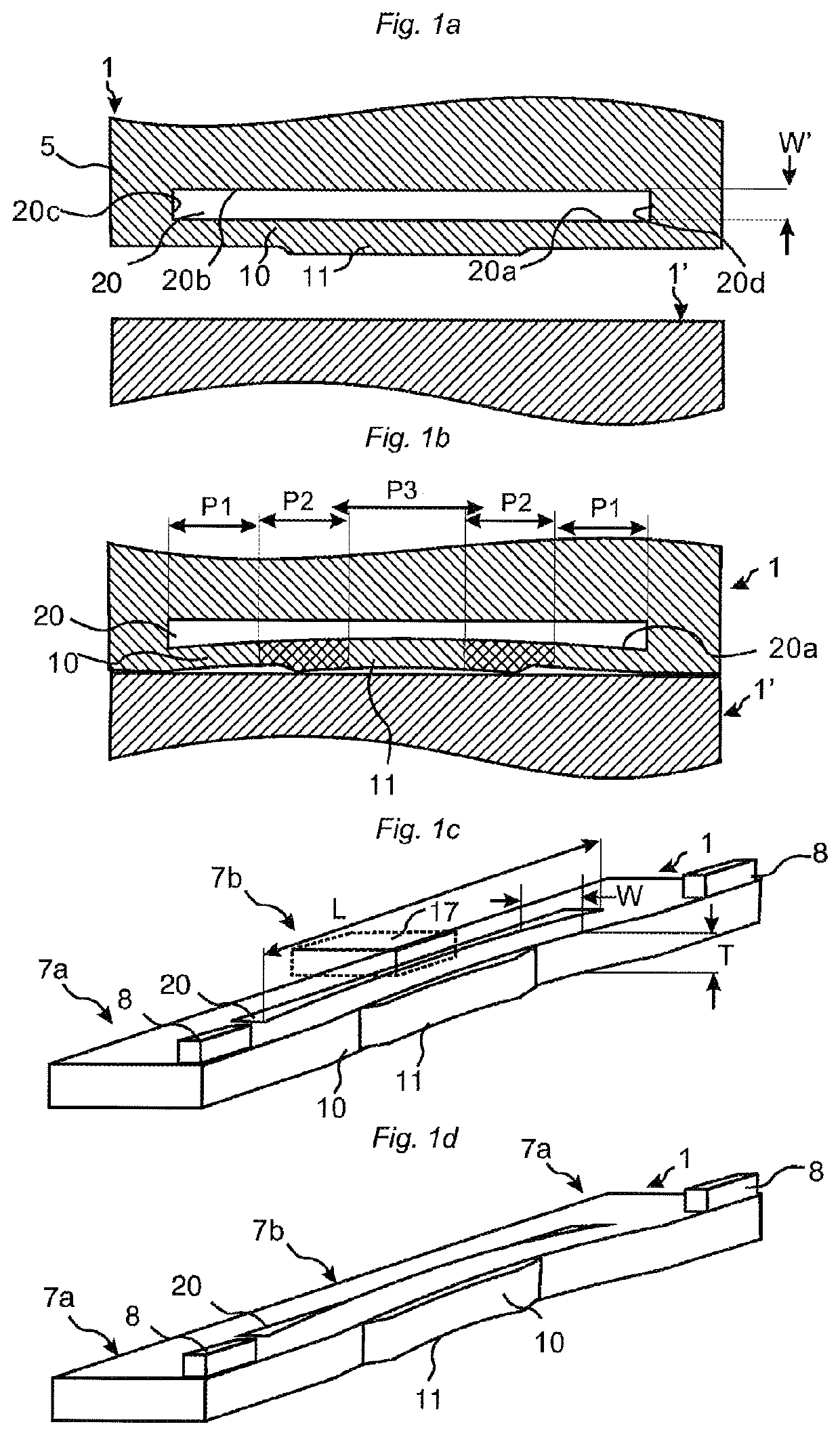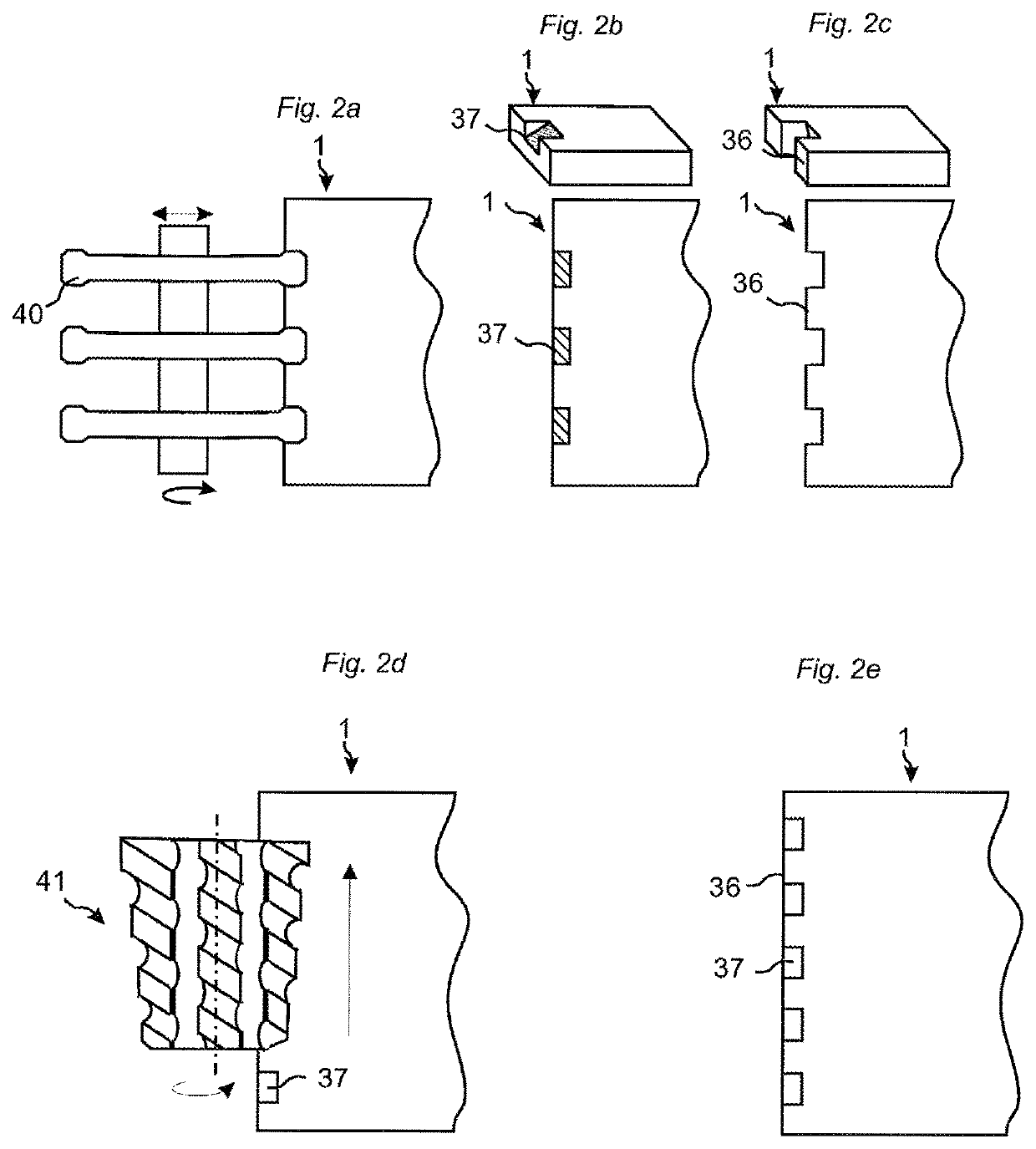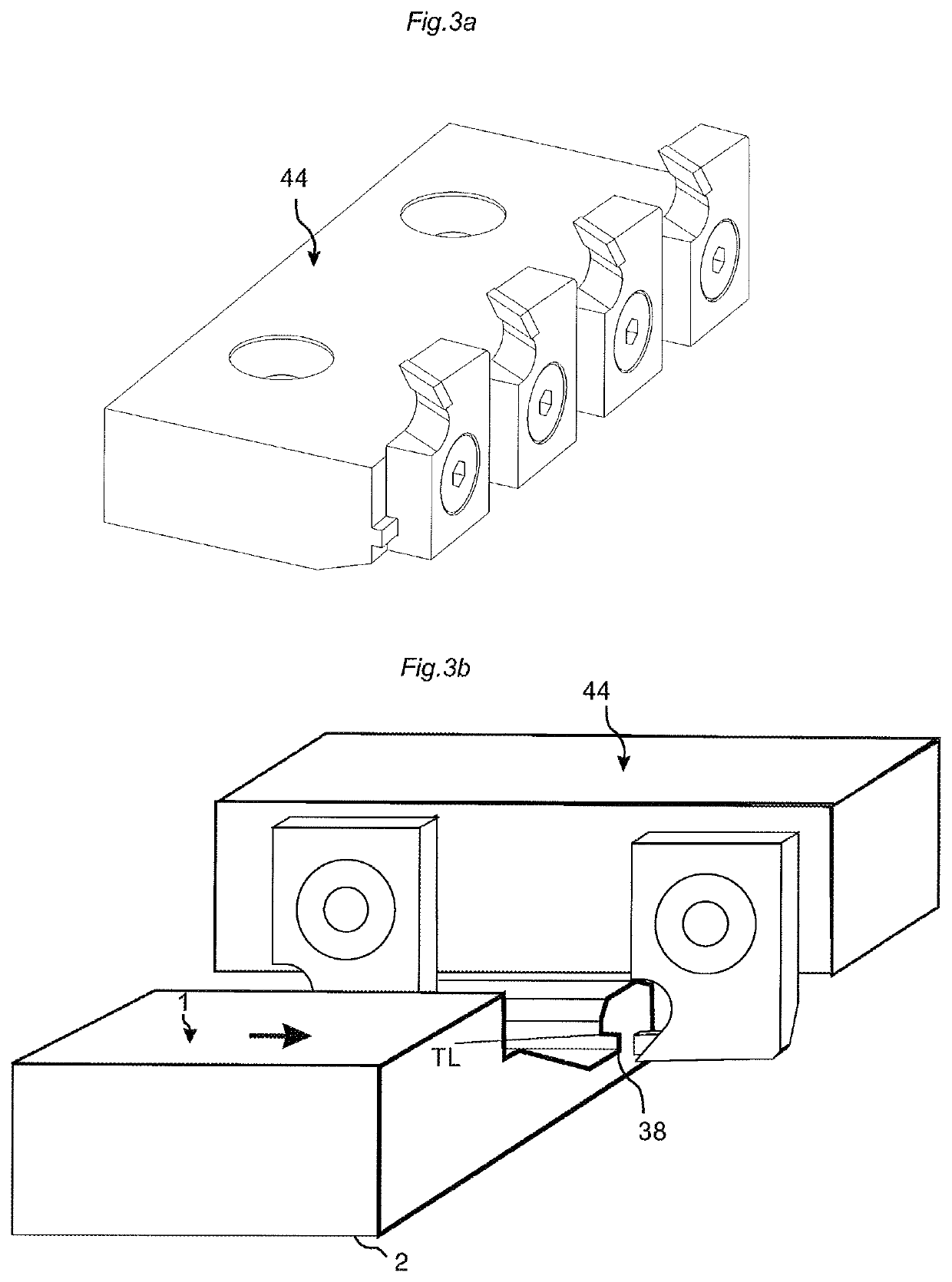Mechanical locking system for floor panels
a technology of locking system and floor panel, which is applied in the field of floor panel mechanical locking system, can solve the problems of low price of floor panel, and high cost of separate tongues and investments in special inserting equipment needed to insert flexible tongues into displacement grooves, and achieve the effect of increasing the locking strength
- Summary
- Abstract
- Description
- Claims
- Application Information
AI Technical Summary
Benefits of technology
Problems solved by technology
Method used
Image
Examples
Embodiment Construction
[0126]The embodiments in FIGS. 1a-1d are used to explain some main problems related to flexible locking elements made in one piece with a core and some basic principles of the inventive concept.
[0127]Locking systems comprising flexible and bendable parts formed in one piece with the core are to a major extent dependent of the material properties and thickness of the core that may vary between various core materials and between the same type of core materials. Each locking system must be formed with a specific geometry that is optimized in relation to the properties and thickness of the specific floor panel. This means that a locking system must provide a variety of alternative geometries and principles that could be combined in order to meet the requirements of normal tolerances used in a cost efficient high speed production, locking strength, easy and reliable installation. The inventive concept provides several principles that may be combined and may be used to form a locking syst...
PUM
| Property | Measurement | Unit |
|---|---|---|
| thick | aaaaa | aaaaa |
| thick | aaaaa | aaaaa |
| thick | aaaaa | aaaaa |
Abstract
Description
Claims
Application Information
 Login to View More
Login to View More - R&D
- Intellectual Property
- Life Sciences
- Materials
- Tech Scout
- Unparalleled Data Quality
- Higher Quality Content
- 60% Fewer Hallucinations
Browse by: Latest US Patents, China's latest patents, Technical Efficacy Thesaurus, Application Domain, Technology Topic, Popular Technical Reports.
© 2025 PatSnap. All rights reserved.Legal|Privacy policy|Modern Slavery Act Transparency Statement|Sitemap|About US| Contact US: help@patsnap.com



